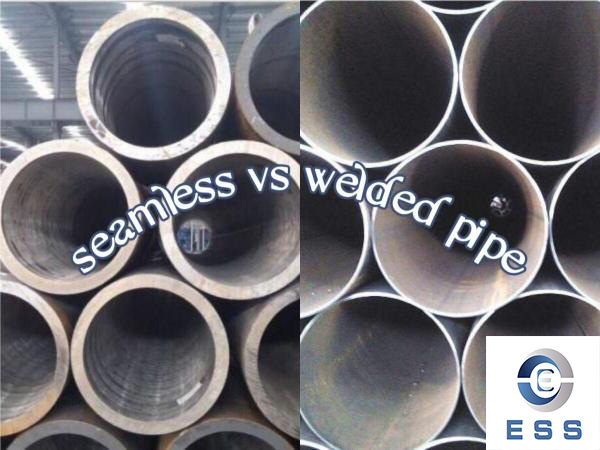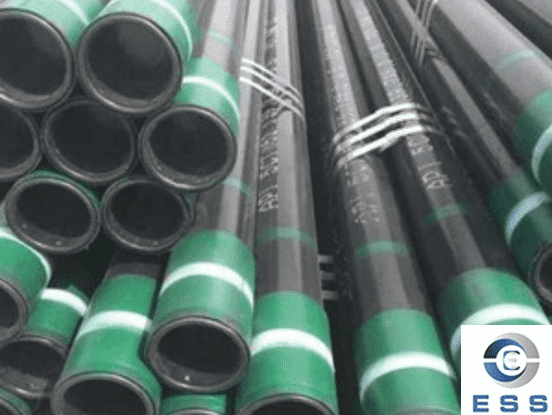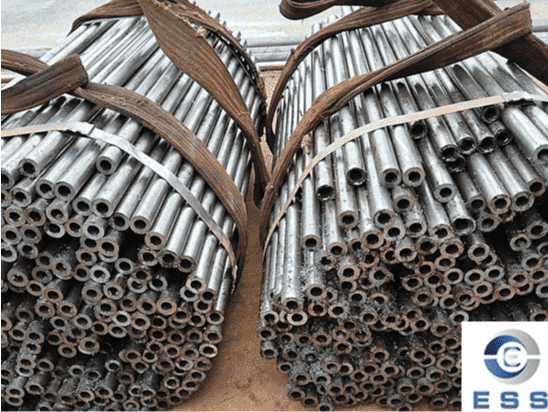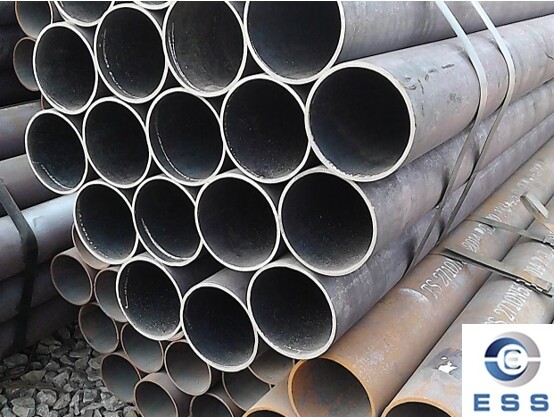Seamless vs welded pipe in quality requirements
Seamless pipe types and standards
Seamless pipe is a hollow tubular product, and its manufacturing process is drawn by matching the mold and the heated steel billet under a certain rolling effect. According to different uses, there are many standards for seamless steel pipes, such as API standards for oil drilling, ASTM standards for cryogenic engineering, etc.

Dimensional standards and quality requirements for seamless pipes
1. Size standards
The size standards of seamless pipes are an important indicator of the quality of seamless pipes and should follow national standards or industry standards. The specific contents are as follows:
(1) Diameter: The diameter of the seamless pipe should meet the standard requirements and be within the allowable deviation range.
(2) Wall thickness: The wall thickness of seamless pipes should meet standard requirements and be within the allowable deviation range.
(3) Length: The length of seamless pipes should meet standard requirements and be within the allowable deviation range.
2. Surface finish
The smoothness of the surface of seamless pipes has a great impact on the quality of the entire pipe and should meet the following requirements:
(1) The surface of the pipe should be smooth, without cracks or burrs.
(2) There is an allowable scratch depth on the pipe surface, and the number of scratches should meet the standard requirements.
3. Chemical composition
The chemical composition of seamless pipes must meet standard requirements.
4. Mechanical properties
The mechanical properties of seamless pipes refer to the mechanical properties of seamless pipes under conditions such as stretching, bending, impact, etc., and should meet the following requirements:
(1) The tensile test should meet the standard requirements.
(2) The bending test should meet the standard requirements.
(3) The impact test should meet the standard requirements.
Welded pipe is a common building material widely used in construction, bridges, roads, water conservancy and other fields. In order to ensure the quality and safety of welded steel pipes, the country has formulated relevant technical requirements and test method standards.
Steps
1.Material preparation
The material of welded steel pipes is generally steel plates or steel strips, which need to be cut, flanged, flattened, etc. before welding. When preparing materials, you need to pay attention to the following points:
(1) The surface of the material should be clean and free of oil, rust and other impurities.
(2) The size and thickness of materials should meet the requirements and should be inspected and measured.
(3) The flanging and flatness of the material should meet the requirements, and no warping, distortion, etc. should occur.
2.Welding preparation
Welding preparation includes the preparation of welding equipment, tools and personnel. When preparing for welding, you need to pay attention to the following points:
(1) Welding equipment should meet the requirements, including welding machines, power sources, electrodes, etc.
(2) Welding tools should be clean and free of oil, rust and other impurities.
(3) Welding personnel should be proficient in welding technology and have relevant certificates and qualifications.
3.Welding operation
Welding operations include welding methods, welding parameters and welding sequences. When performing welding operations, you need to pay attention to the following points:
(1) Welding methods should meet the requirements, including manual welding, submerged arc welding, gas shielded welding, etc.
(2) Welding parameters should be adjusted according to the type, thickness and welding method of the material, including current, voltage, welding speed, etc.
(3) The welding sequence should be determined according to the shape and structure of the material to ensure the quality and aesthetics of the weld.
4. Inspection and acceptance
After welding is completed, inspection and acceptance are required. Inspection and acceptance include appearance inspection, dimensional inspection, mechanical property inspection, etc. When conducting inspection and acceptance, you need to pay attention to the following points:
(1) Appearance inspection should meet the requirements, including the flatness of the weld, the height and width of the weld, etc.
(2) Dimensional inspection should meet the requirements, including the length, width and depth of the weld.
(3) Mechanical property inspection should meet the requirements, including tensile strength, bending strength and impact toughness, etc.
Standard requirement
The national standards for welded steel pipes mainly include technical requirements and test methods. Its main requirements are as follows:
1.Technical requirements
(1) The selection and preparation of materials should meet the requirements, including the chemical composition, mechanical properties and dimensional accuracy of the materials.
(2) Welding methods and parameters should meet the requirements, including welding type, current, voltage, welding speed, etc.
(3) The welding quality should meet the requirements, including the flatness of the weld, the height and width of the weld, etc.
(4) The surface of welded steel pipes should be clean and free of oil, rust and other impurities.
2.Test method
(1) Appearance inspection should meet the requirements, including the flatness of the weld, the height and width of the weld, etc.
(2) Dimensional inspection should meet the requirements, including the length, width and depth of the weld.
(3) Mechanical property inspection should meet the requirements, including tensile strength, bending strength and impact toughness, etc.
(4) The test samples of welded steel pipes should meet the requirements, including the number, size and location of the samples.
Summarize
Seamless pipes are important products for large steel companies and are mainly used in many fields such as petroleum, natural gas, chemicals, electric power, pharmaceuticals, construction, and machinery. Welded steel pipe is a common building material widely used in construction, bridges, roads, water conservancy and other fields. Different fields of use have different standards and quality requirements. In order to ensure the performance and quality of seamless pipes and welded steel pipes, manufacturers should strictly follow national standards or industry standards to ensure stable and reliable product quality.
Read more: The Benefits and Drawbacks of Seamless vs Welded Pipes













 Eastern Steel Manufacturing Co.,Ltd not only improve product production and sales services, but also provide additional value-added services. As long as you need, we can complete your specific needs together.
Eastern Steel Manufacturing Co.,Ltd not only improve product production and sales services, but also provide additional value-added services. As long as you need, we can complete your specific needs together.










